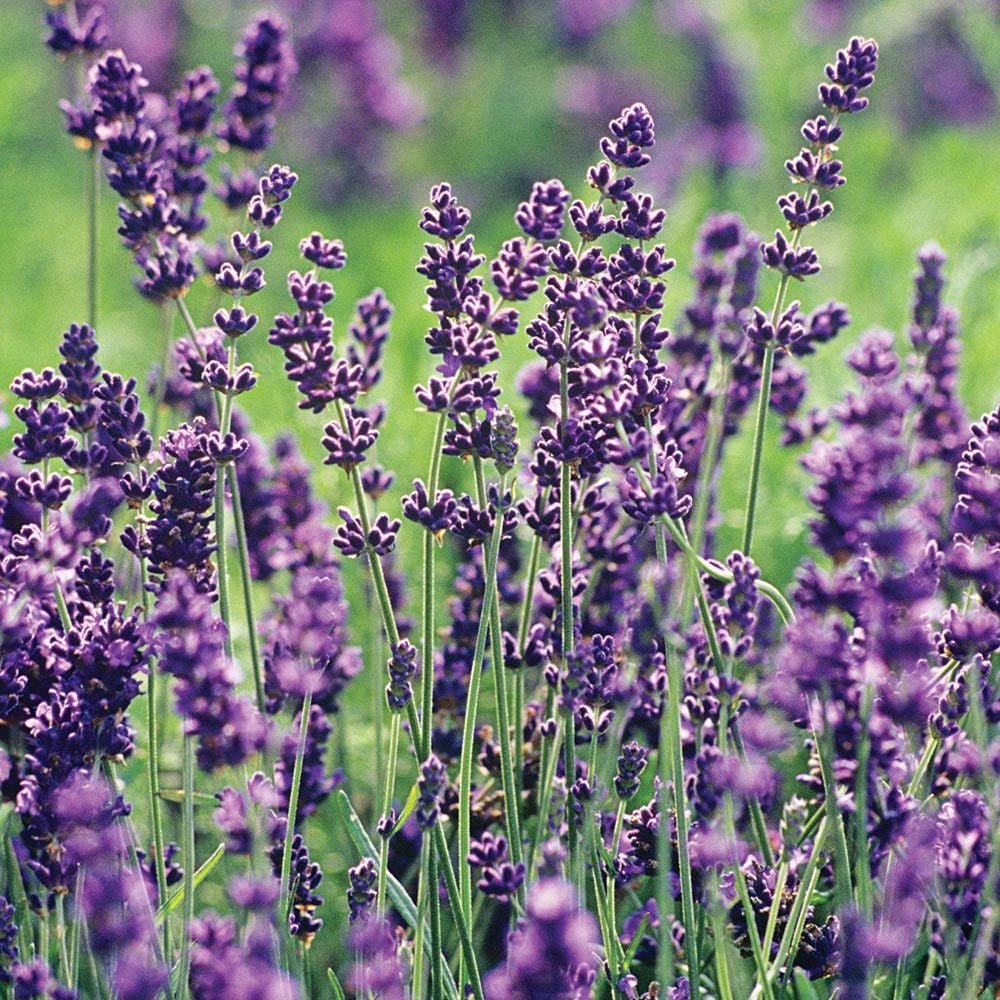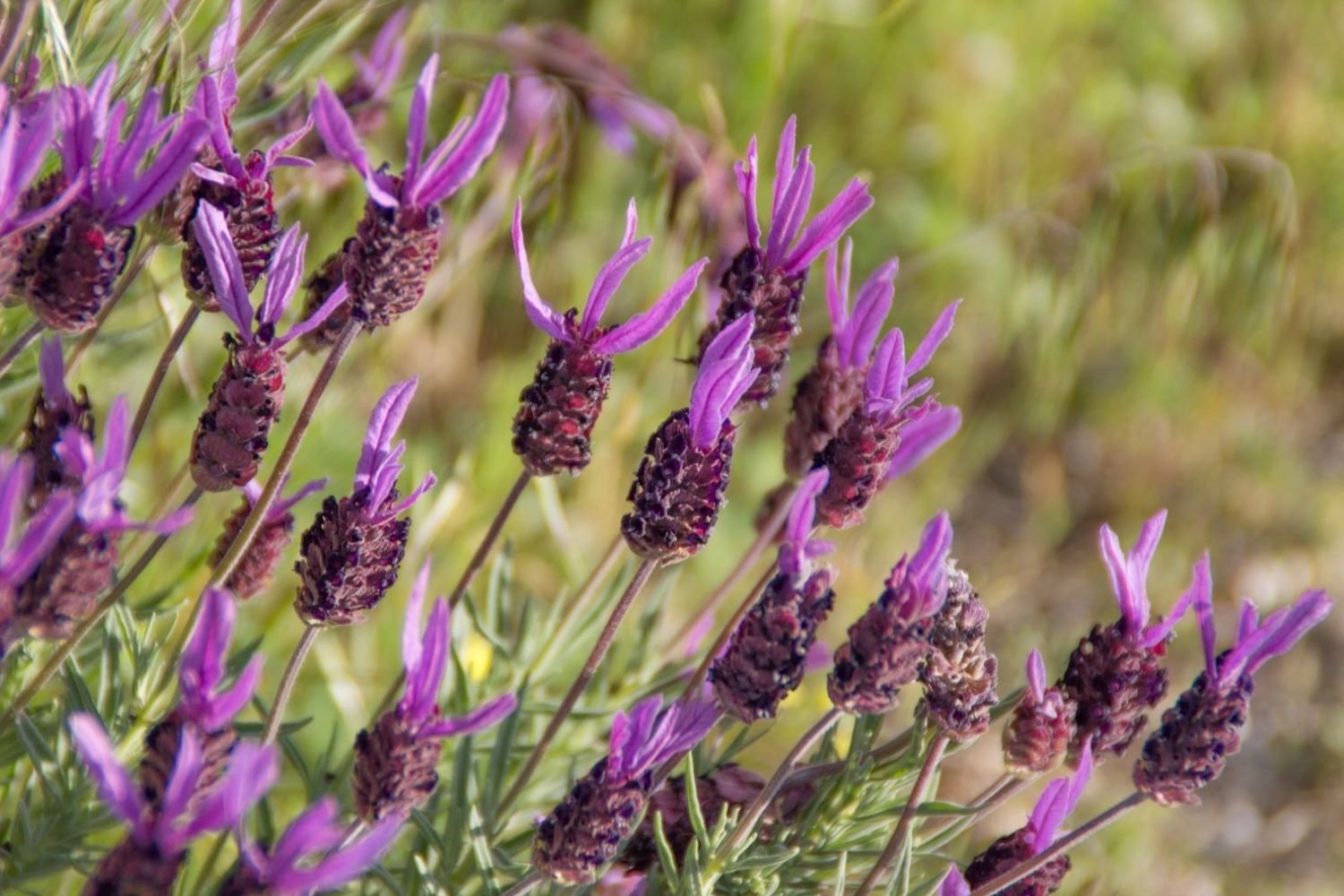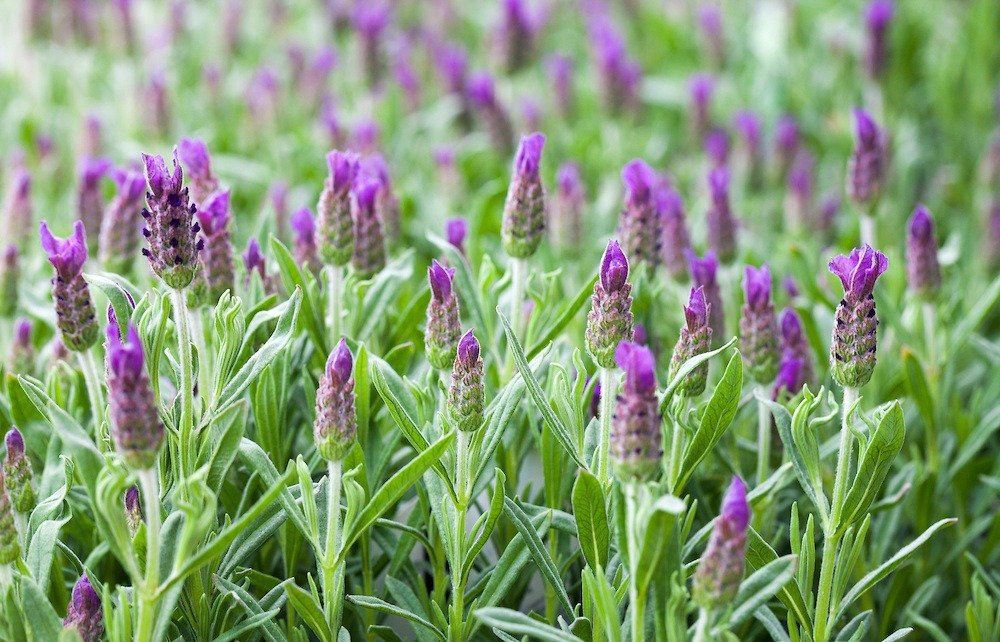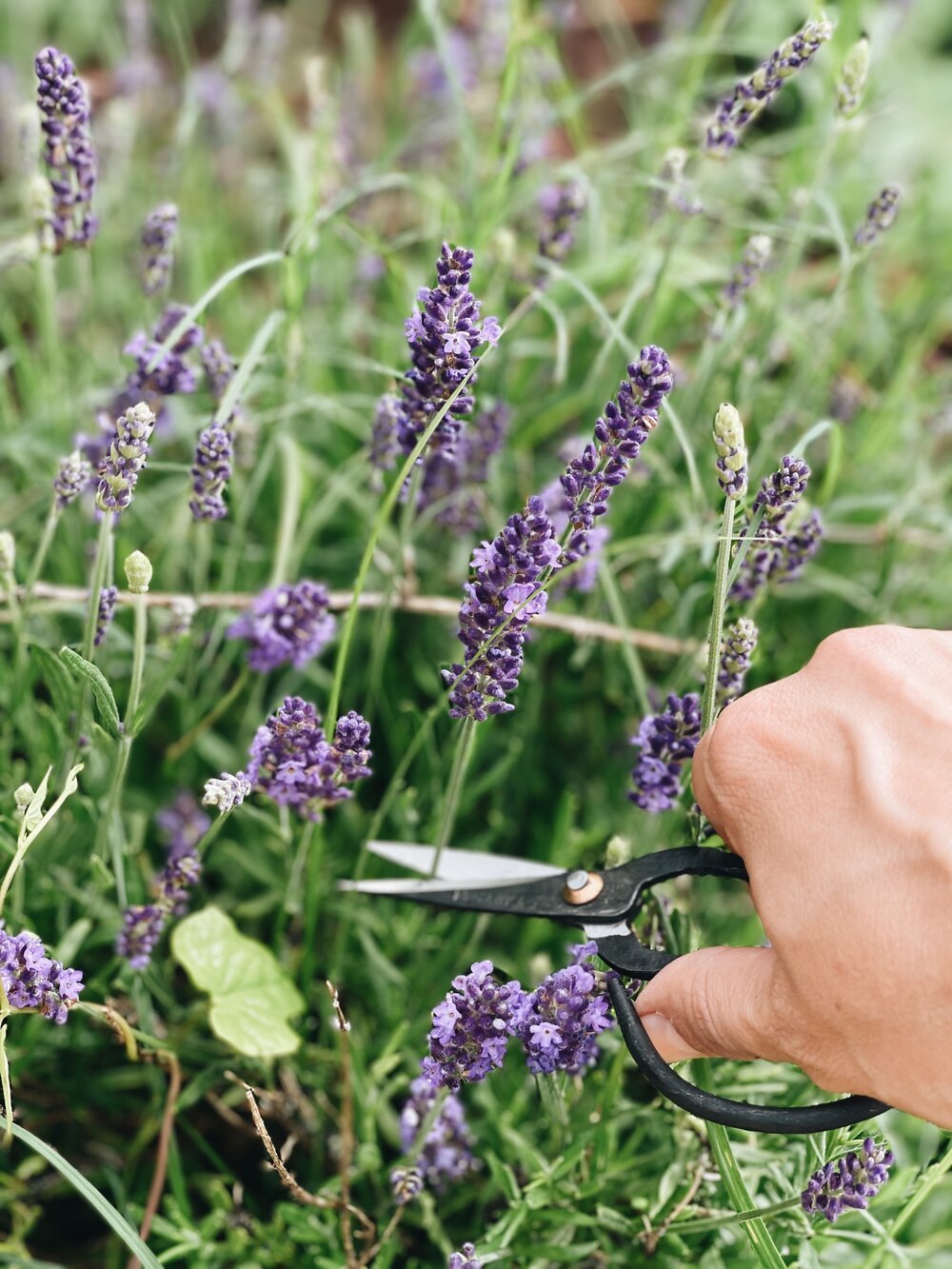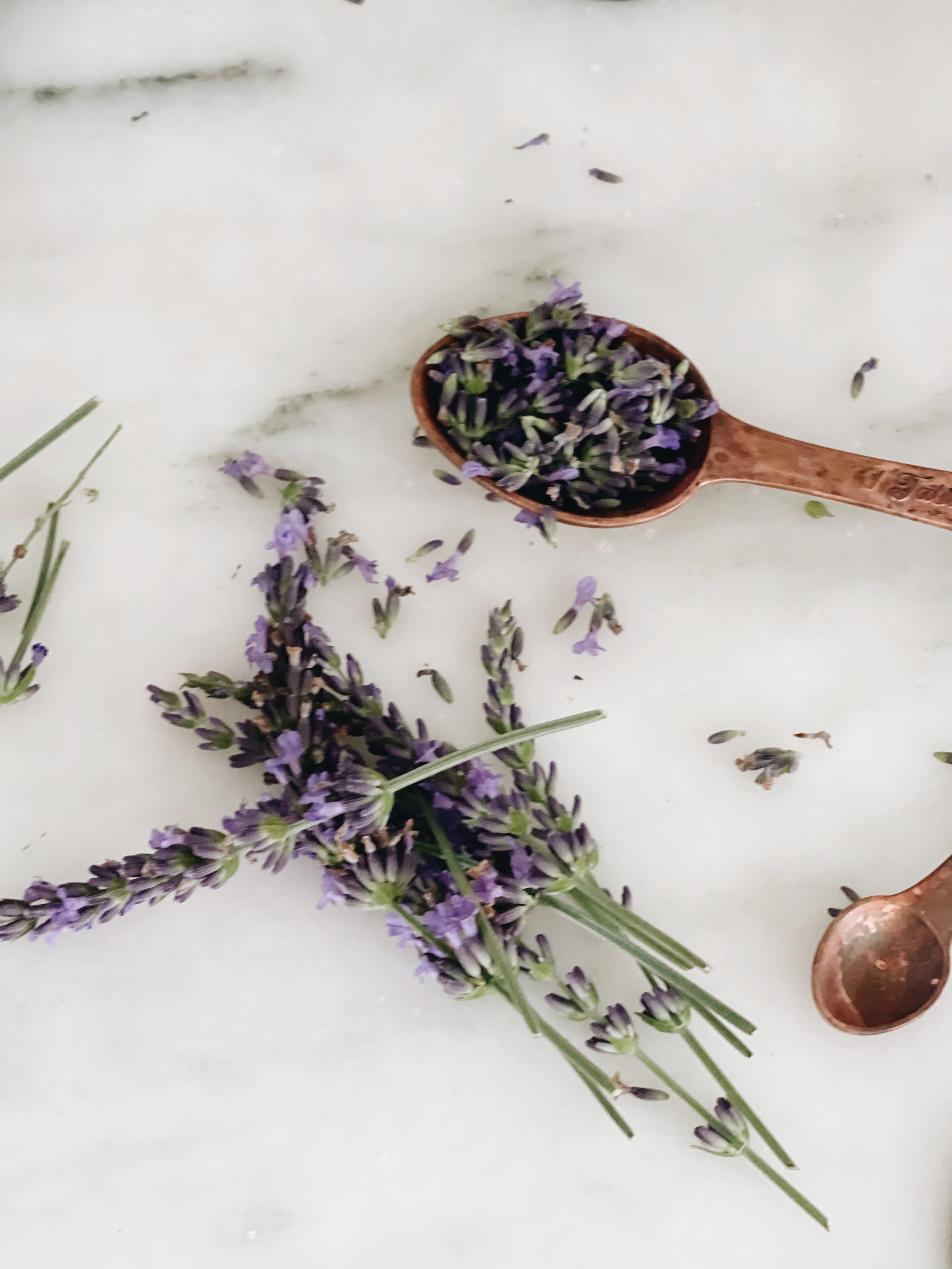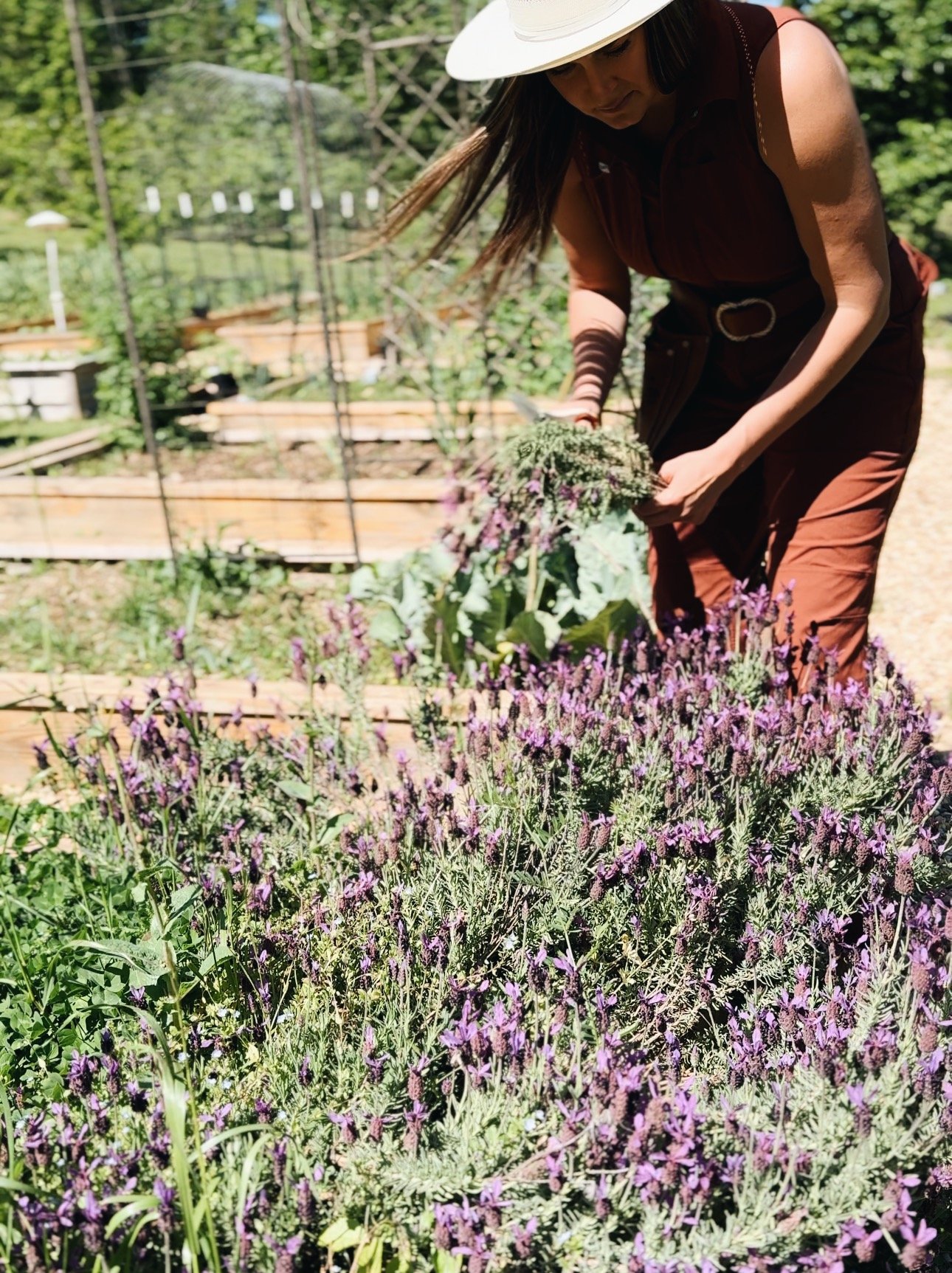A Beginner's Guide To Growing Beautiful, Healthy Lavender
If you're anything like me, you probably love the sight and scent of lavender! Doesn't it just remind you of that typical European country-slow-living lifestyle??
But lavender is not just a pretty plant—this herbaceous plant offers many benefits, is relatively easy to grow, attracts beneficial insects, and adds a touch of charm to any garden.
We have lavender planted at the edges of almost all our beds, and I can definitely say that they contribute to the health of our garden.
If you’re ready to add some lovely lavender to your garden or even grow a few in pots, scroll down for all the details on growing lavender successfully!
Contents:
Benefits of Growing Lavender
Besides smelling and looking nice, there are many reasons to grow lavender!
Soothing Fragrance
Lavender emits a calming and soothing fragrance that can help reduce stress, anxiety, and promote relaxation. Simply brushing against the foliage or harvesting blooms can release the aromatic compounds, creating a tranquil atmosphere in your garden or home.
Pollinator Attraction
Lavender is a magnet for pollinators such as bees, butterflies, and other beneficial insects. The abundant nectar-rich blooms provide a vital food source for these pollinators, helping to support biodiversity and the health of your garden ecosystem.
Versatility
Lavender is a versatile plant with a wide range of uses. From adding a floral touch to dishes to herbal remedies, aromatherapy, and DIY projects, lavender offers endless possibilities. Dried blooms can be used in sachets, potpourri, herbal teas, or as a fragrant addition to bath and body products.
Low Maintenance
Lavender is a low-maintenance plant that thrives in various climates and soil conditions. Once established, it is drought-tolerant and requires minimal watering and fertilization. Its hardy nature makes it an ideal choice for beginner gardeners or those with busy schedules.
Long Blooming Period
Lavender produces abundant blooms that last for an extended period, typically from late spring to early summer. The beautiful lavender-colored flowers add a pop of color to your garden and attract attention from humans and pollinators alike.
READ MORE:
The Most Common Types of Lavender
These are some of the most well-known lavender plants:
English Lavender (Lavandula angustifolia)
Also known as true lavender, English lavender is the most widely cultivated species. Its compact growth habit, fragrant flowers, and high oil content make it ideal for culinary, medicinal, and ornamental purposes. Popular cultivars include 'Hidcote', 'Munstead', and 'Lady'.
French Lavender (Lavandula dentata)
French lavender is distinguished by its toothed or serrated leaves, which set it apart from other lavender species. It typically has a more sprawling growth habit and produces showy flower spikes topped with tufts of bracts. While not as cold-hardy as English lavender, it is still a popular choice thanks to its beautiful looks! Common cultivars include 'Royal Crown' and 'Goodwin Creek Grey'.
Spanish Lavender (Lavandula stoechas)
Spanish lavender is characterized by its unique flower heads, which feature large, colorful bracts resembling rabbit ears. The flowers are typically topped with a cluster of smaller blooms, creating a striking appearance. Spanish lavender tends to be more heat and drought-tolerant than other species, making it suitable for warmer climates. Popular cultivars include 'Otto Quast' and 'Anouk'.
Lavandin (Lavandula x intermedia)
Lavandin is a cross between English lavender and spike lavender. It is known for its robust growth, long flower spikes, and strong fragrance. Lavandin varieties are often favored for their high oil content, making them popular choices for essential oil production. Common cultivars include 'Grosso', 'Provence', and 'Hidcote Giant'.
when to plant lavender
The best time to plant lavender depends on your climate and growing conditions, but late spring (April to May) is generally the ideal season for planting lavender.
Here's why:
After the Frost: Lavender is sensitive to cold temperatures, especially young ones. Planting after the last frost date in your area reduces the risk of frost damage to your lavender plants.
Warm Soil: Lavender thrives in warm soil, so planting in spring allows the soil to warm up sufficiently for optimal root growth. This gives your lavender a head start in establishing itself before the heat of summer arrives.
Growing Season: Spring provides a long growing season ahead, allowing your lavender plants to establish strong roots and develop healthy foliage before they enter dormancy in the winter.
Less Stress: Planting in spring reduces transplant shock and stress on your lavender plants compared to planting in hotter or colder months. The milder temperatures and ample sunlight of spring create favorable conditions for successful establishment.
If you live in a warmer climate with mild winters, you may have more flexibility in planting lavender and could potentially plant in fall or early winter. However, in regions with colder winters, it's best to wait until spring to plant your lavender outdoors.
Where to plant lavender
Full sun all the way
Lavender loves the sun—the more, the better! For optimal growth, plant your lavender in a spot that gets at least six to eight hours of sunlight per day.
Lavender can tolerate partial shade or dappled sunlight for a few hours each day, especially in hot summer climates.
In semi-shade, lavender may grow more leggy and produce fewer blooms than plants grown in full sun. However, it can still thrive and give you aromatic foliage.
Sandy, dry soil is best
Lavender prefers well-drained, sandy soil that is drier and slightly alkaline in pH. If your soil is heavier, amend it with sand or gravel to improve drainage.
Soil without much organic matter will encourage a higher concentration of oils and yummy scents, so mix in less organic matter and fertilizer.
Think Mediterranean vibes to give you a great idea of what lavender needs!
how to plant lavender
Planting lavender is relatively straightforward, but there are a few key steps to ensure your plants get off to a good start!
Prepare the Soil
Before planting, amend the soil with sand and gravel for better drainage and add just a little organic matter, such as compost or well-rotted manure, to improve fertility.
Remove any weeds or debris from the planting area to give your lavender plants a clean start.
Planting
Dig a hole slightly larger than your lavender plant's root ball.
Gently remove the plant from its container and loosen the roots if tightly bound.
Place the lavender plant in the hole, ensuring that the top of the root ball is level with the surrounding soil surface.
Backfill the hole with soil, pressing it firmly around the base of the plant to remove any air pockets.
Water the newly planted lavender thoroughly to settle the soil around the roots.
Spacing
Space lavender plants 12–18 inches apart to allow for good air circulation and prevent overcrowding as they mature.
Mulching
Apply a thin layer of mulch around the base of the lavender plants to help retain moisture, suppress weeds, and regulate soil temperature.
Watering
Regularly water the newly planted lavender to keep the soil moist until the plants become established.
Once established, lavender is drought-tolerant and prefers infrequent, deep watering rather than frequent shallow watering. Let the soil dry out between waterings to prevent root rot and other moisture-related issues. If you forget about them for a few days or weeks, don't worry; they will be okay!
Maintenance
Prune lavender plants lightly after flowering to promote bushier growth and prevent woody stems. Proper pruning in early spring will encourage new growth. You can cut back taller varieties by approximately one-third of their height, and lower-growing varieties by a couple of inches or down to new growth.
Remove any dead or damaged growth regularly to keep the plants healthy and tidy.
Fertilization is generally not necessary for lavender, but if the soil is poor or lacking in nutrients, you can apply a balanced fertilizer sparingly in the spring. Be careful, as too much nitrogen can result in leggy growth and fewer blooms.
Monitor for Pests and Diseases
Look for common pests like aphids, spider mites, and whiteflies, which can infest lavender plants. Inspect your plants regularly and treat any infestations promptly with organic insecticidal soap or neem oil.
Additionally, watch for signs of fungal diseases like powdery mildew, especially in humid conditions.
Harvesting
Lavender blooms are at their peak right before the flowers open fully. Snip the stems just above the first set of leaves
Hang your lavender upside down in a warm, dry place to dry out completely.
Once dry, you can use the fragrant blooms in sachets, potpourri, or culinary creations.
How to Get the Most Blooms
We want lavender for the blooms, after all, right?! To get your lavender to bloom optimally, there are a few things to consider:
If your soil is too fertile, you may have fewer blooms. You can either move your plants or add sand or gravel to aerate and reduce nutrient density.
Your lavender needs a lot of sun! If it doesn't get at least 6-8 hours, replant it in a different spot or into pots so you can move it around.
Pruning is also your secret weapon. After the first flush of blooms has faded, give your lavender a light trim to encourage new growth and more flowers.
can you grow lavender indoors?
Yes, you can grow lavender indoors! But it requires some special considerations to thrive in an indoor environment.
Here's what you need to know about growing lavender indoors:
Choose the Right Variety
Select lavender varieties that are well-suited for indoor growing. Some cultivars are more compact and better adapted to container cultivation, making them ideal for indoor environments. Look for varieties labeled as suitable for indoor or container growing.
Provide Plenty of Direct Light
Lavender is a sun-loving plant and requires bright light to thrive indoors. Place your lavender pots near a south-facing window where they can receive at least 6-8 hours of direct sunlight daily. If natural light is limited, supplement with grow lights to provide adequate illumination.
Use Well-Draining Soil
Lavender plants are susceptible to root rot if they sit in soggy soil, so it's crucial to use a well-draining potting mix specifically formulated for succulents or cacti. Ensure the containers have drainage holes to allow excess water to escape.
Control Temperature and Humidity
Lavender prefers moderate temperatures and low humidity levels. Aim to keep indoor temperatures between 60-75°F (15-24°C) during the day and slightly cooler at night.
Avoid placing lavender plants near drafty windows or heating vents, as sudden temperature fluctuations can stress them. Still, ensure good air circulation around them to prevent fungal diseases.
Water Carefully
Once established, lavender is drought-tolerant, so it's essential not to overwater indoor plants. Allow the top inch of soil to dry out between waterings, then water thoroughly until excess moisture drains from the bottom of the pot. Avoid letting the soil become waterlogged, which can lead to root rot.
Prune Regularly
To keep your indoor lavender plants compact and bushy, prune them regularly to encourage new growth and prevent legginess. Trim back any leggy or dead stems and spent flowers to promote continuous blooming.
READ MORE:
companion planting with lavender
Lavender is not only a beautiful and fragrant plant but also an excellent companion to many other herbs, flowers, and vegetables in the garden.
Here are some of the best companion plants to grow alongside lavender:
Rosemary, Thyme, Sage, Oregano
All these plants are aromatic herbs that thrive in similar growing conditions as lavender. Planting them together creates a fragrant and visually appealing herb garden. These plants also attract pollinators like bees and butterflies and can help repel pests in your garden.
Marigolds
Marigolds are colorful annual flowers that make excellent companions for lavender. Their vibrant blooms attract pollinators and help repel pests like aphids and nematodes. Planting marigolds around lavender can also add a pop of color to the garden
Tomatoes & Peppers
Lavender can help repel pests like aphids, whiteflies, and spider mites that commonly affect tomato and pepper plants. Planting lavender near them can attract beneficial insects like ladybugs and lacewings, which prey on tomato and pepper pests.
Cabbage Family (Brassicas)
Planting lavender nearby can benefit vegetables like cabbage, kale, broccoli, and Brussels sprouts. Lavender's aromatic foliage can help repel cabbage moths and other pests that feed on brassica crops.
Lettuce and Salad Greens
Lavender's fragrance can help repel pests like slugs and snails that feed on tender lettuce and salad greens.
READ MORE:
23 Herbs and flowers for organic pest control in the garden
I hope these tips will help you grow some beautiful lavender plants! They truly are a treasure in the garden, which everyone loves, including the bees and butterflies!
If you want to learn more about gardening and the simple country living lifestyle, I think these resources will be very helpful to you:
MY SIMPLE COUNTRY LIVING BOOK - Techniques, Recipes, and Wisdom for the Garden, Kitchen, and Beyond
OUR HOMEGROWN COMMUNITY - A platform with many educational videos and workshops on gardening, farming, animal care, canning, and more!
Love, Annette xx



